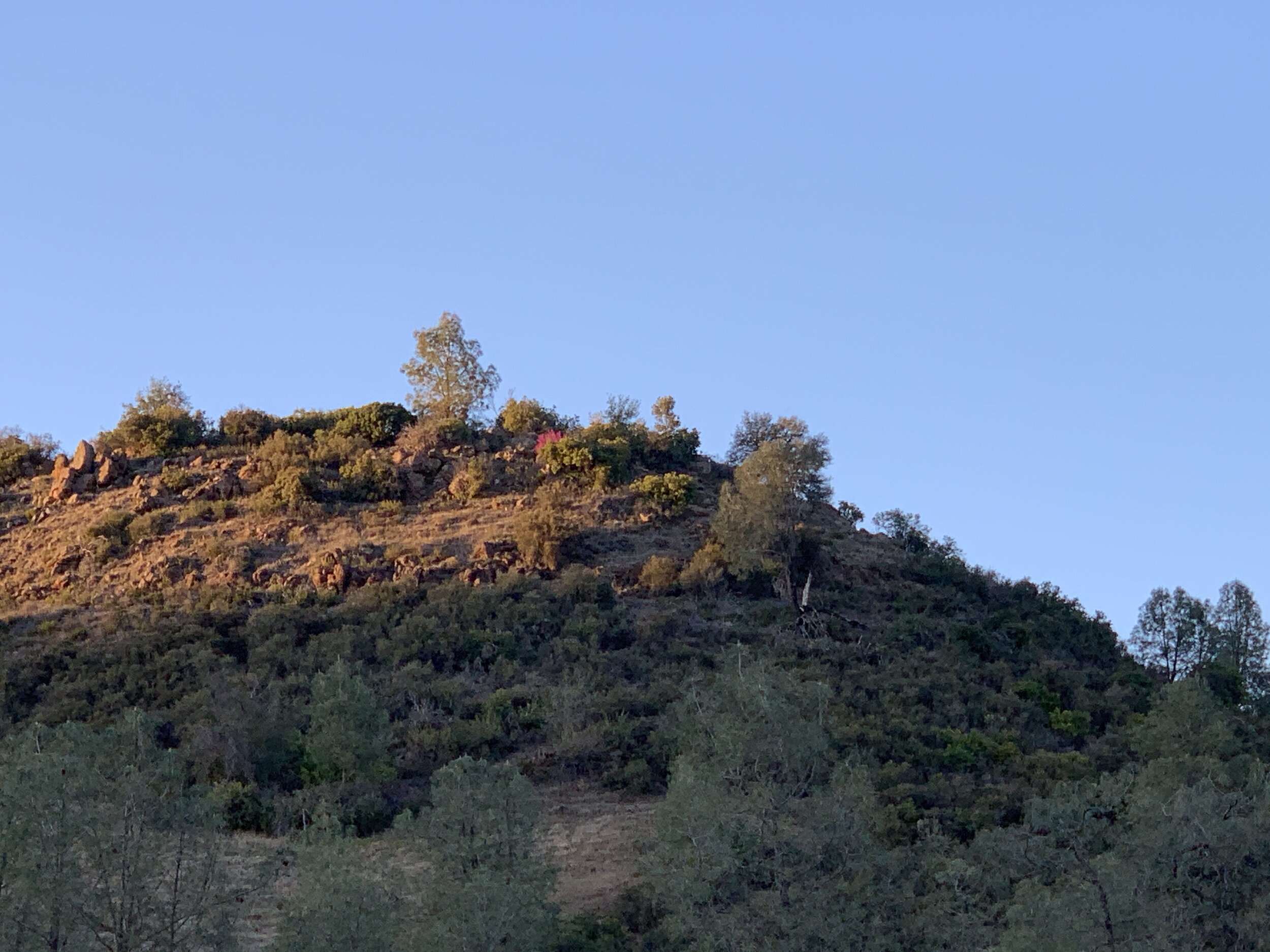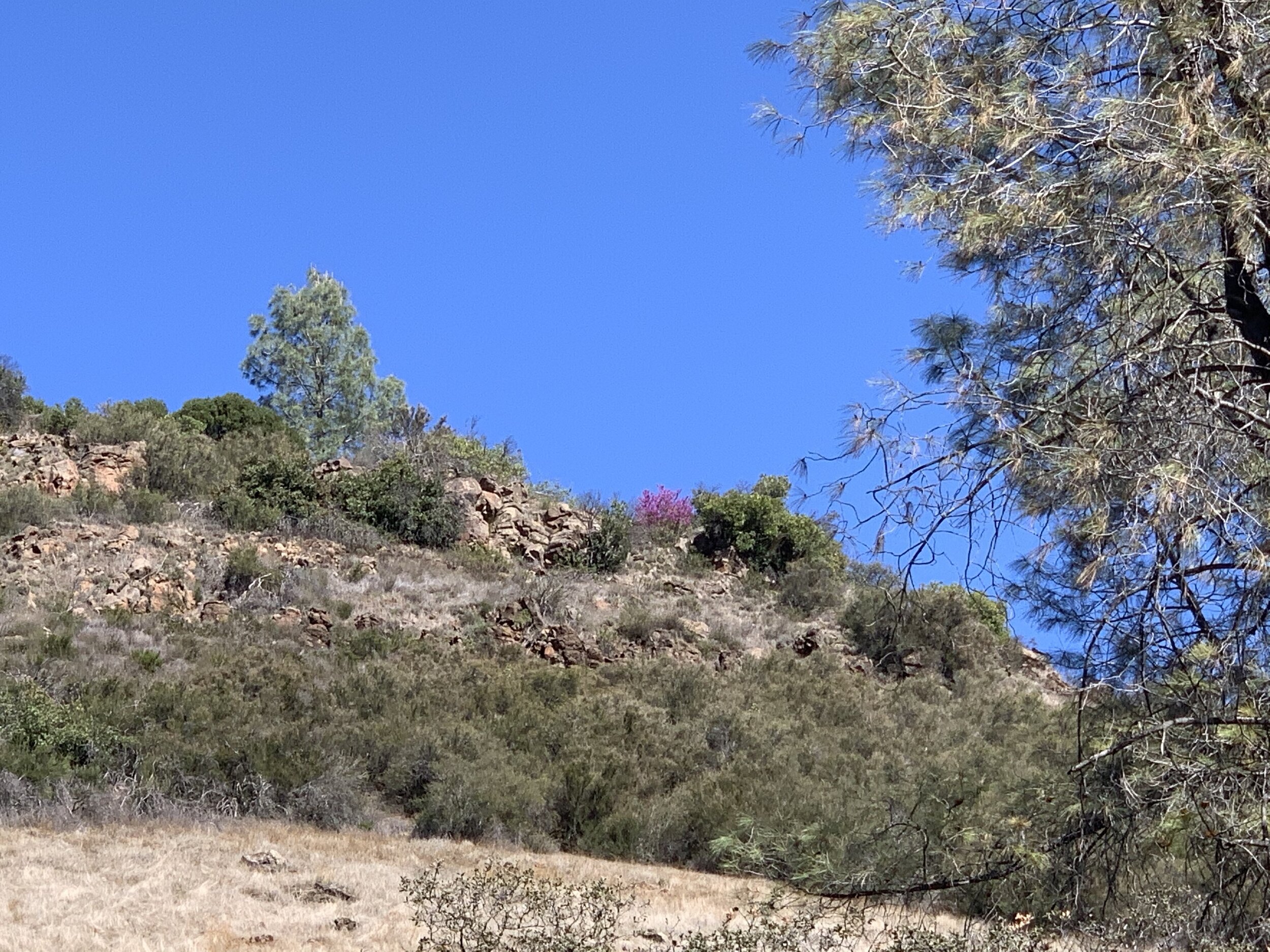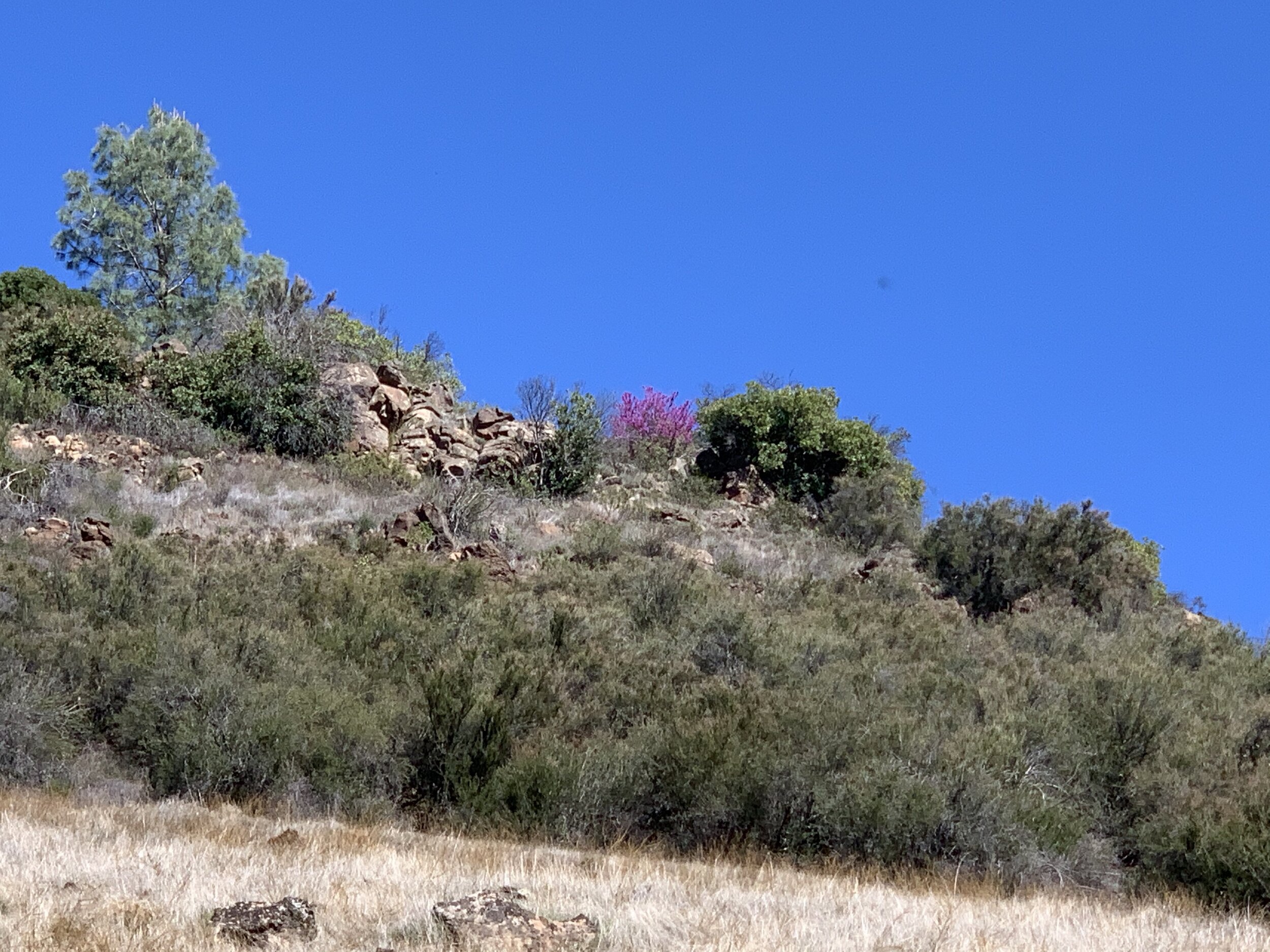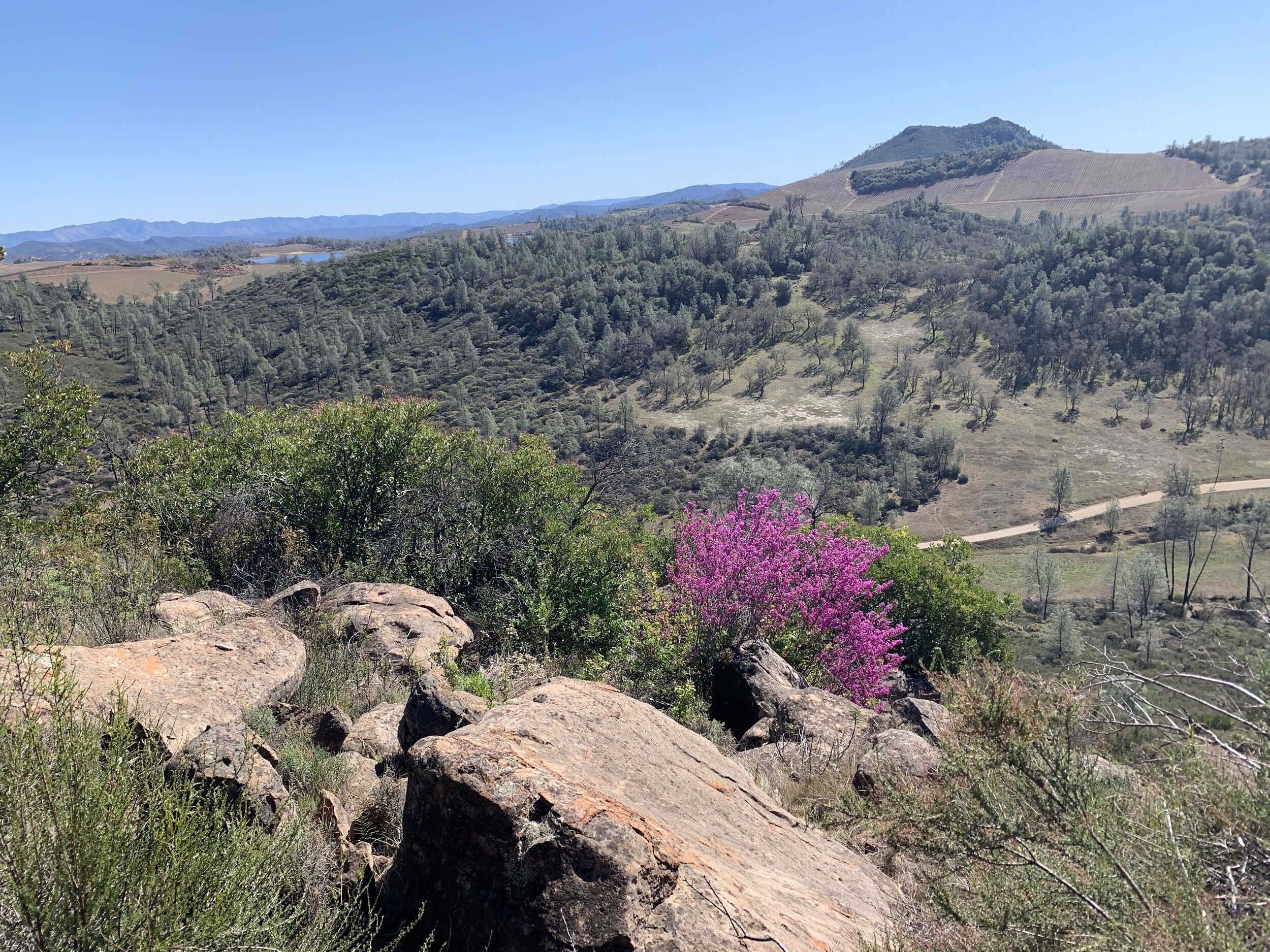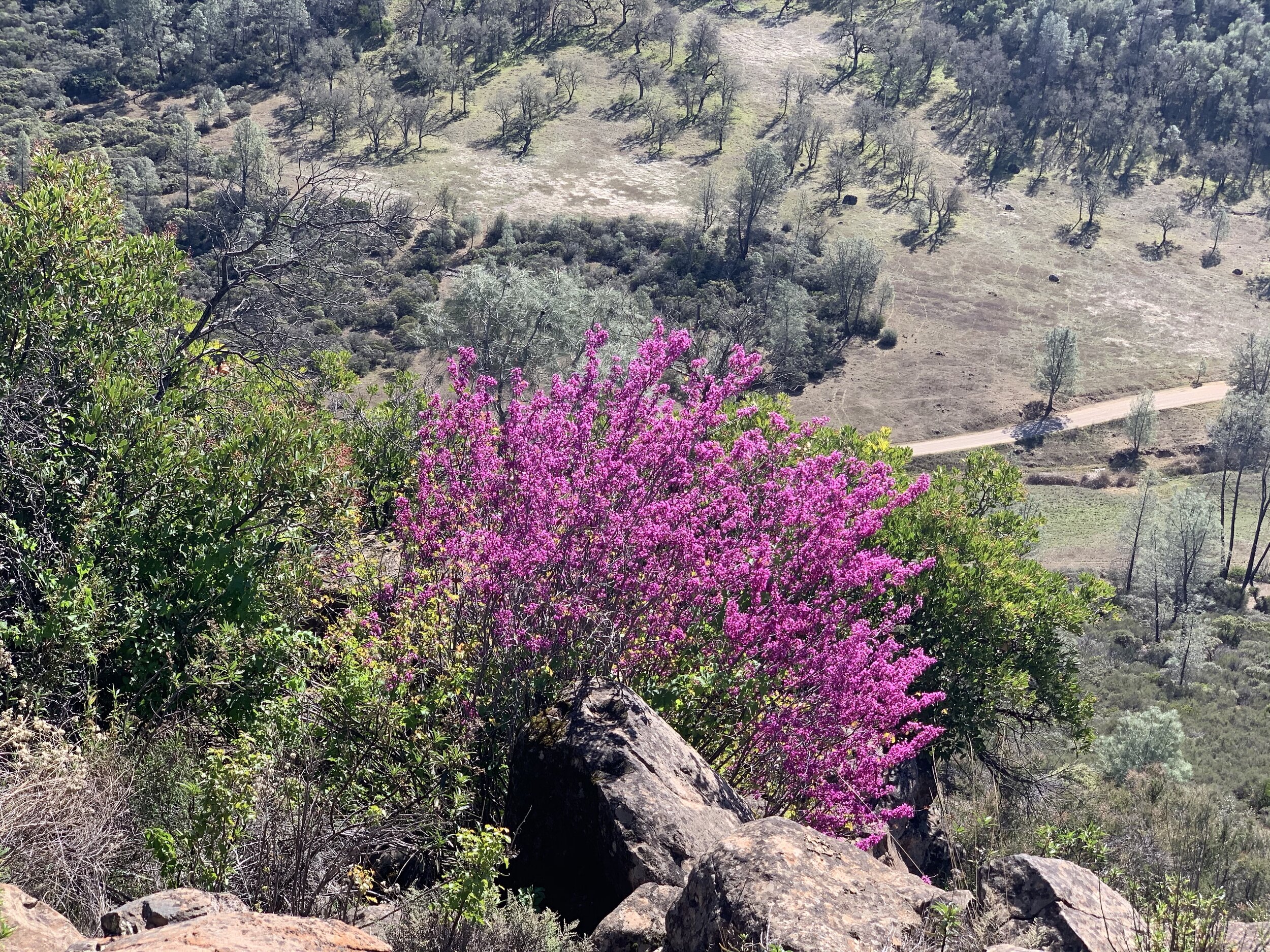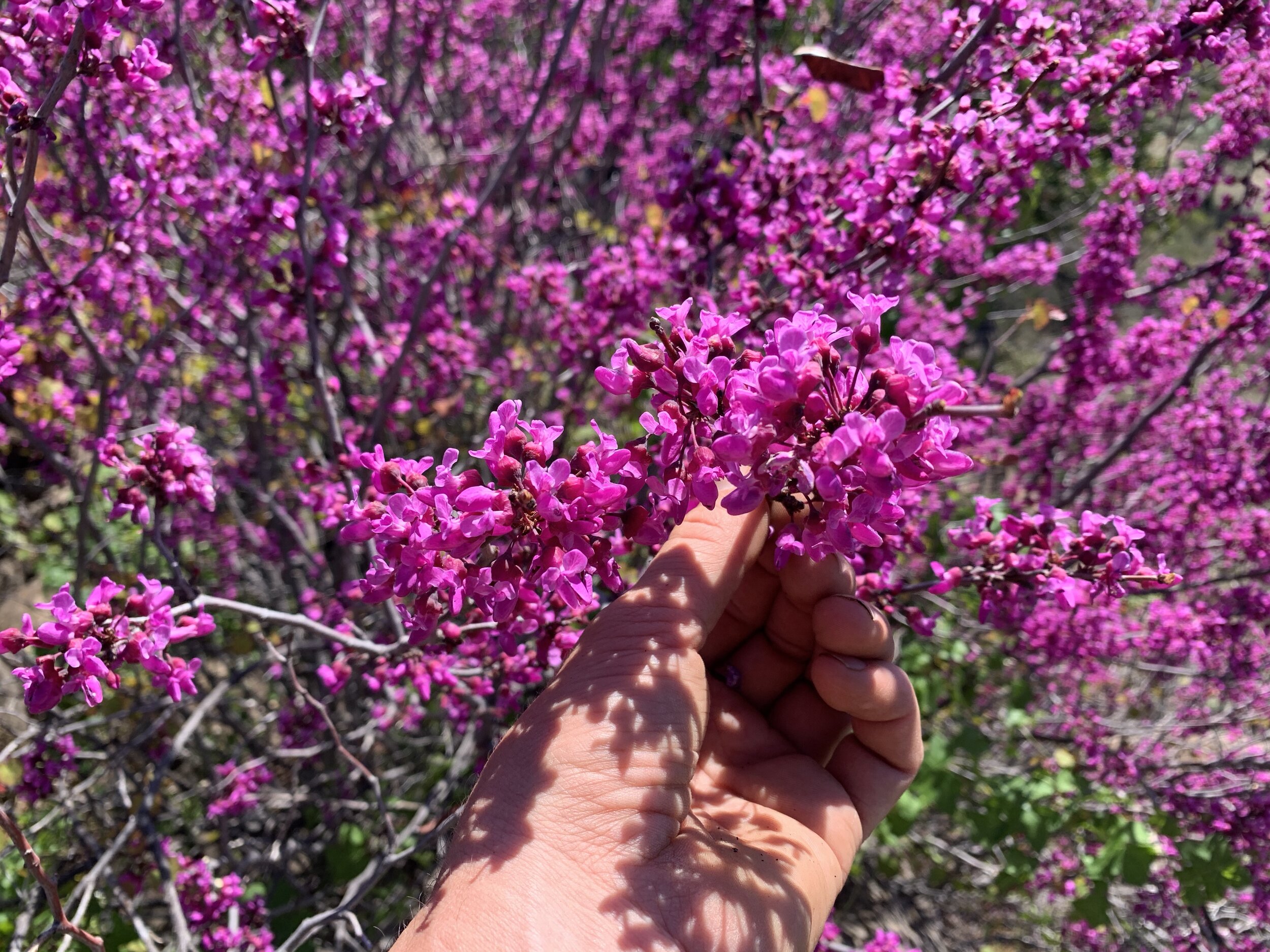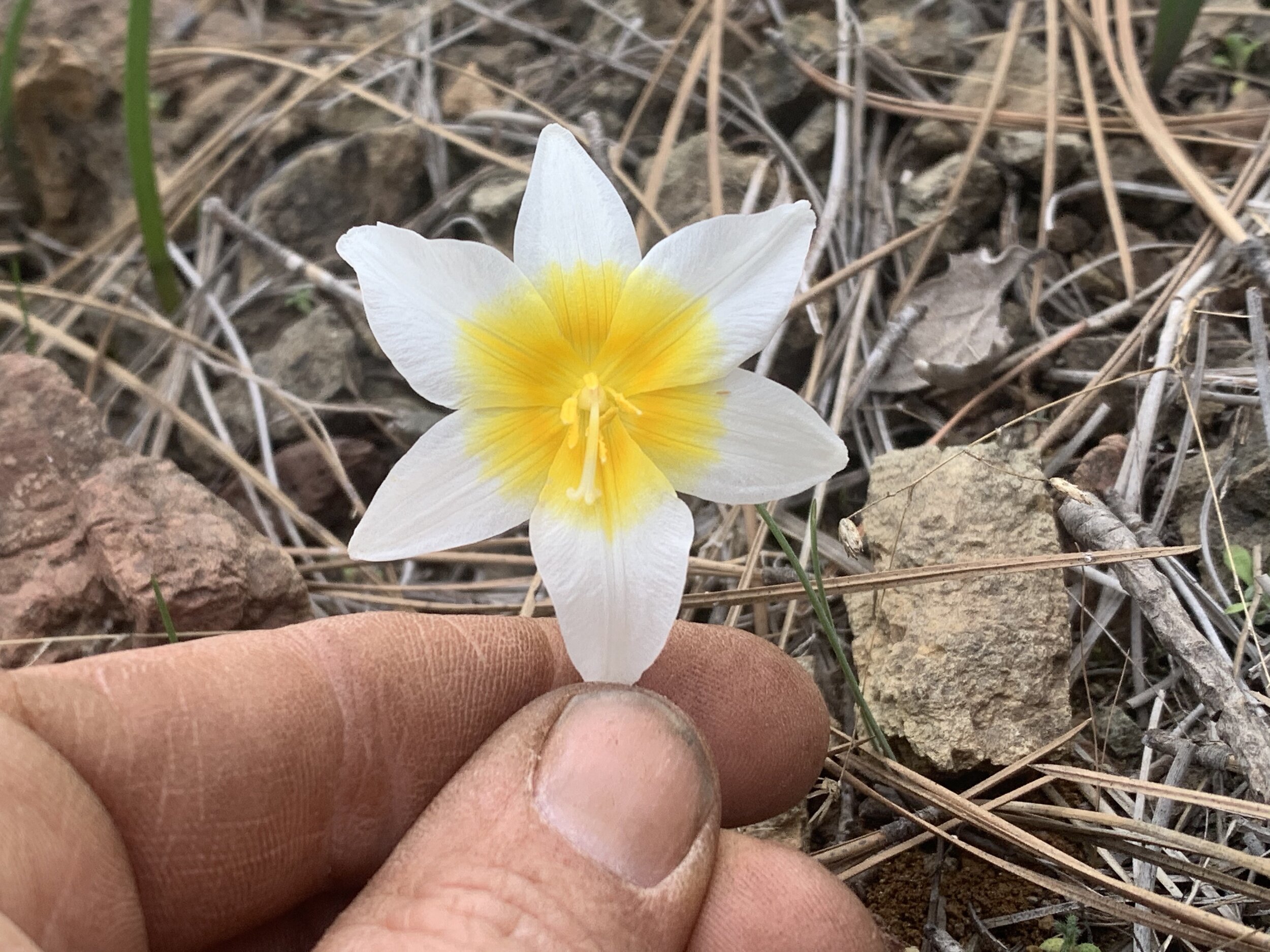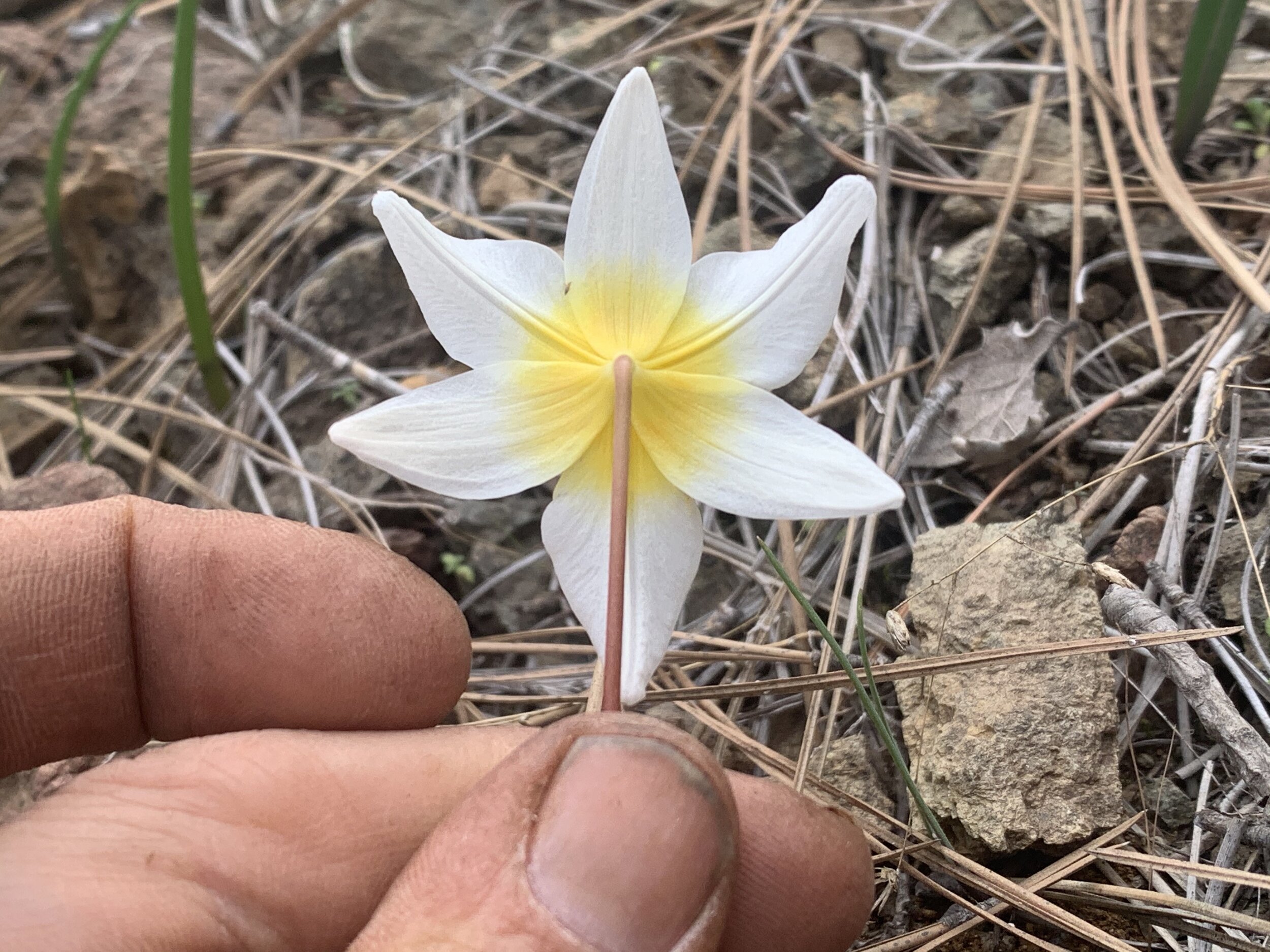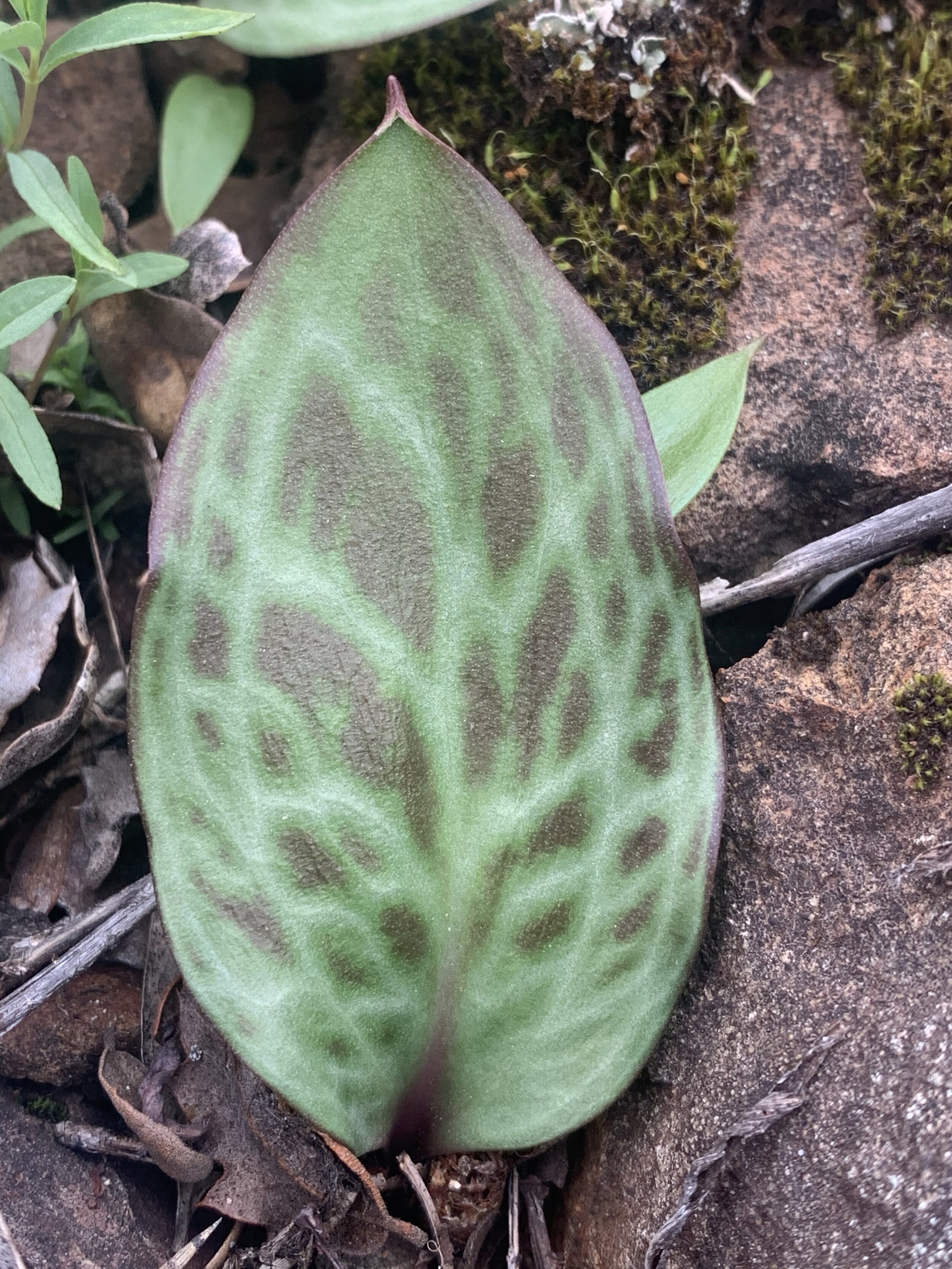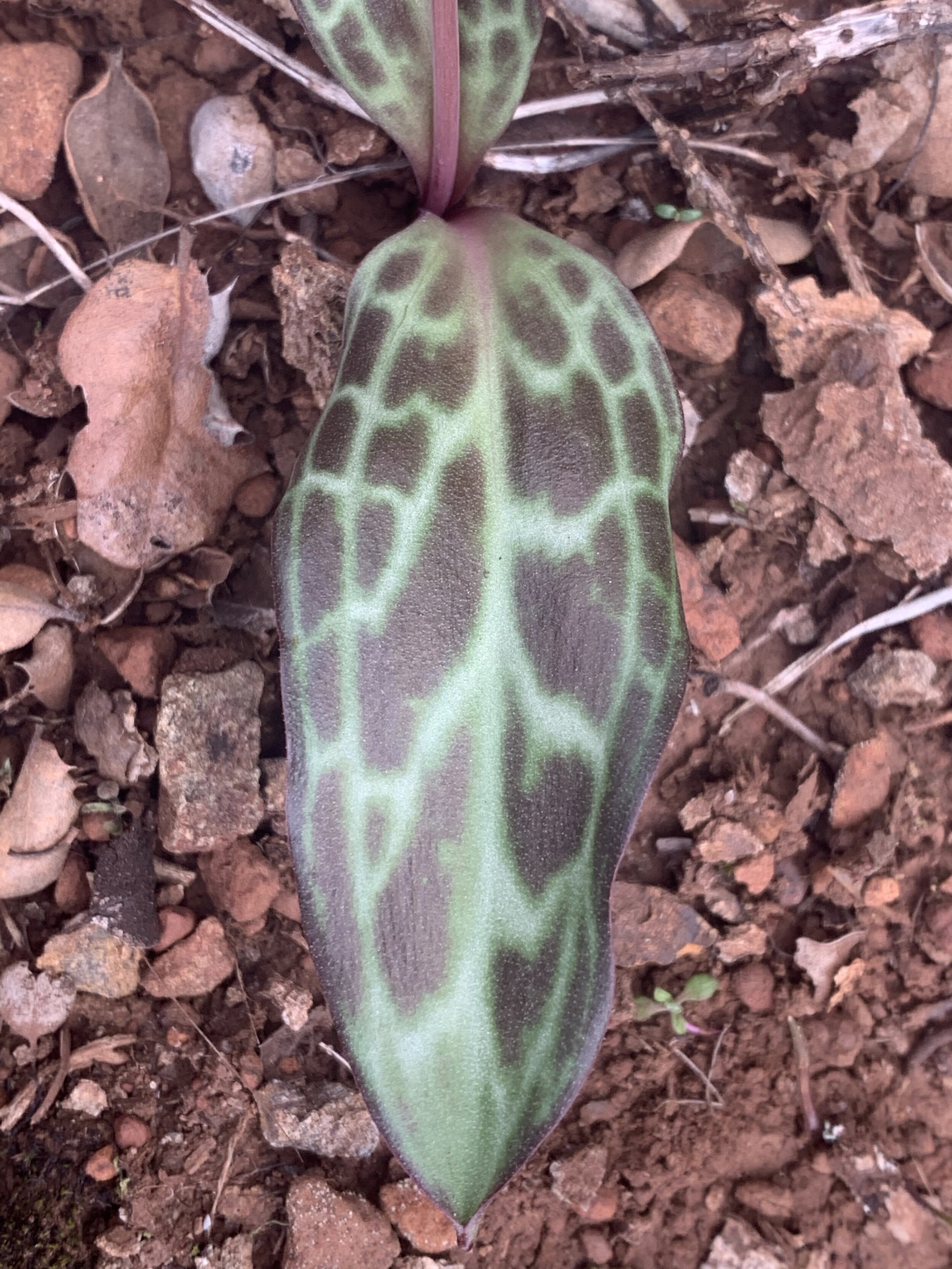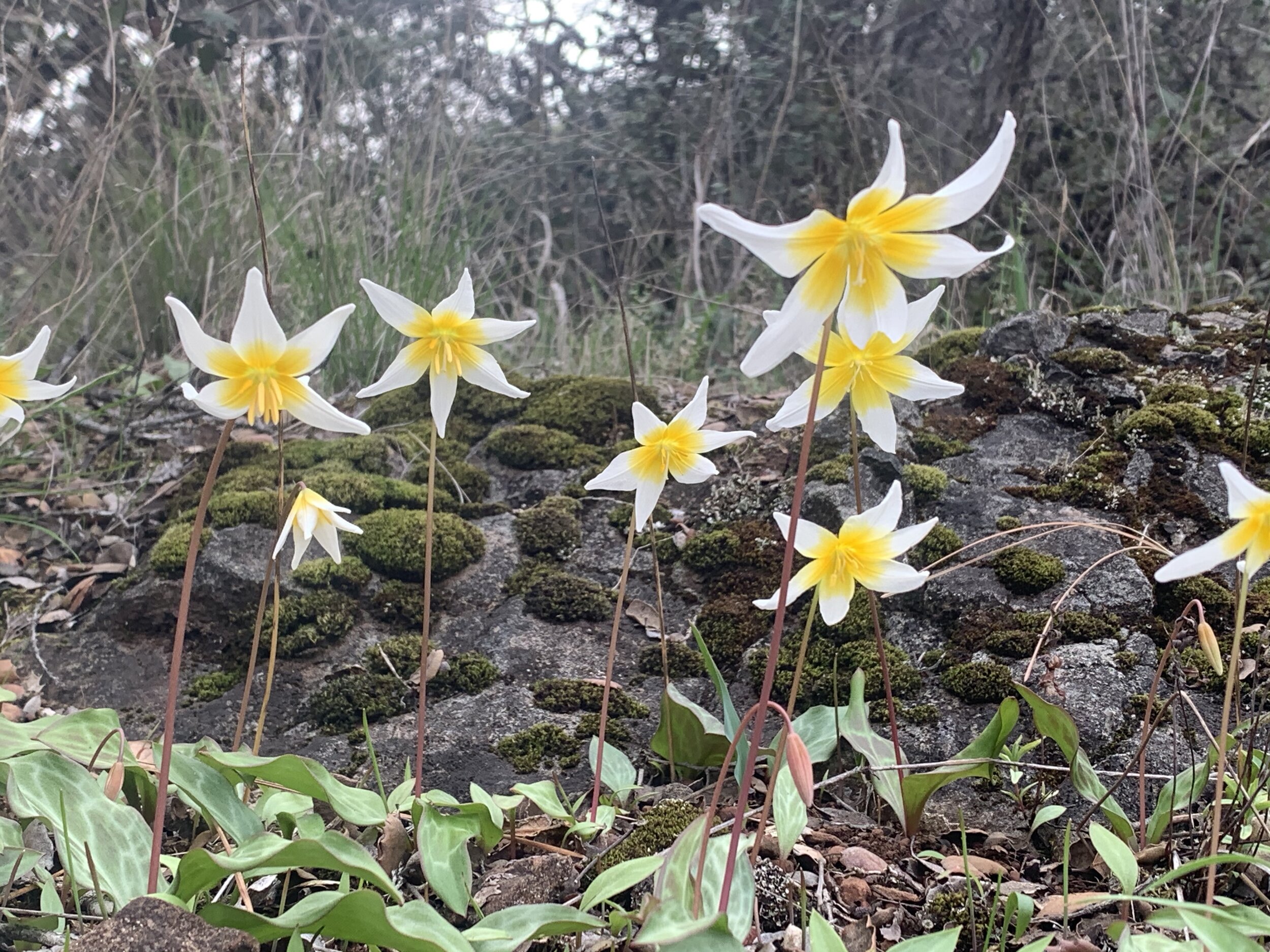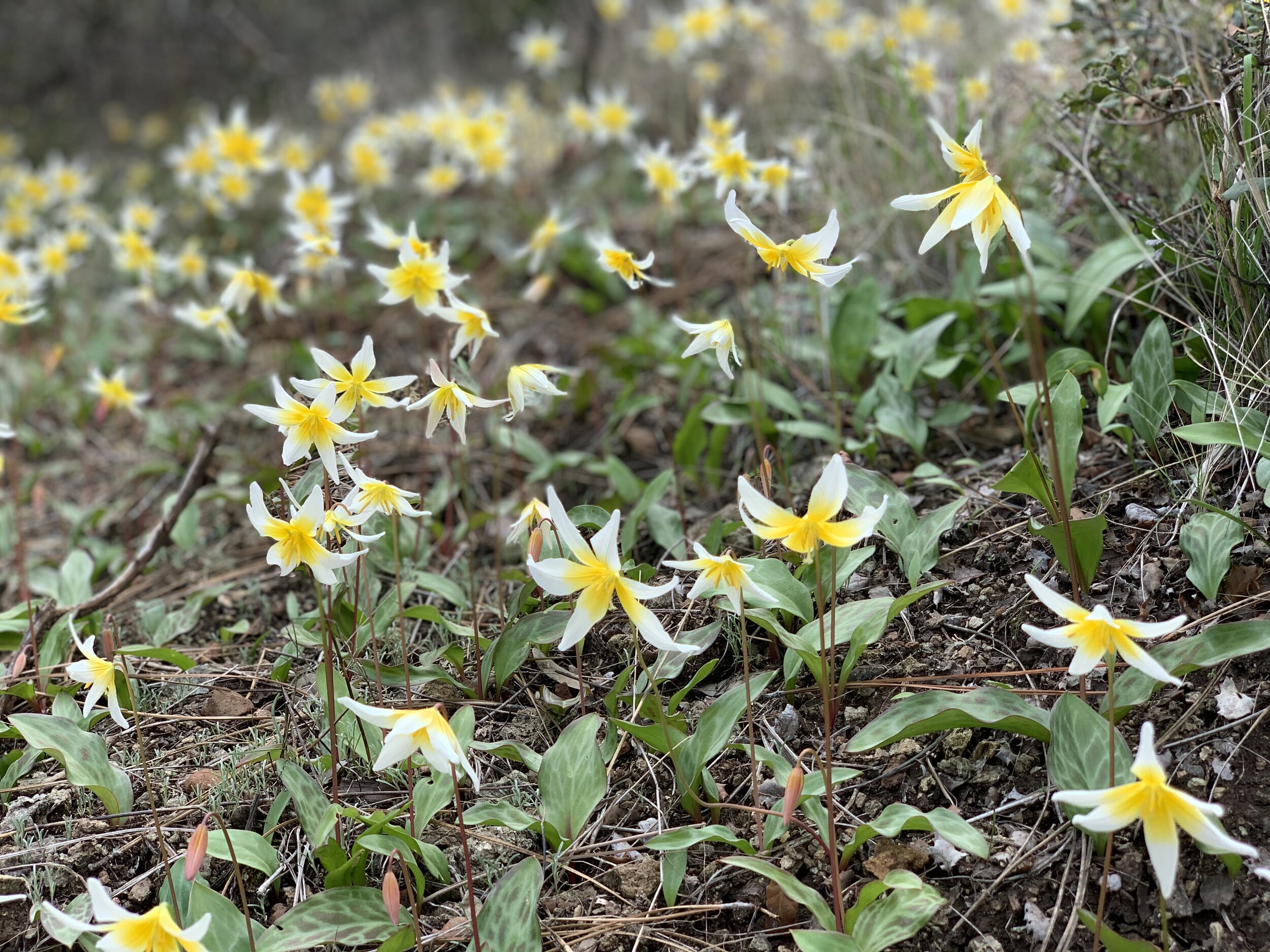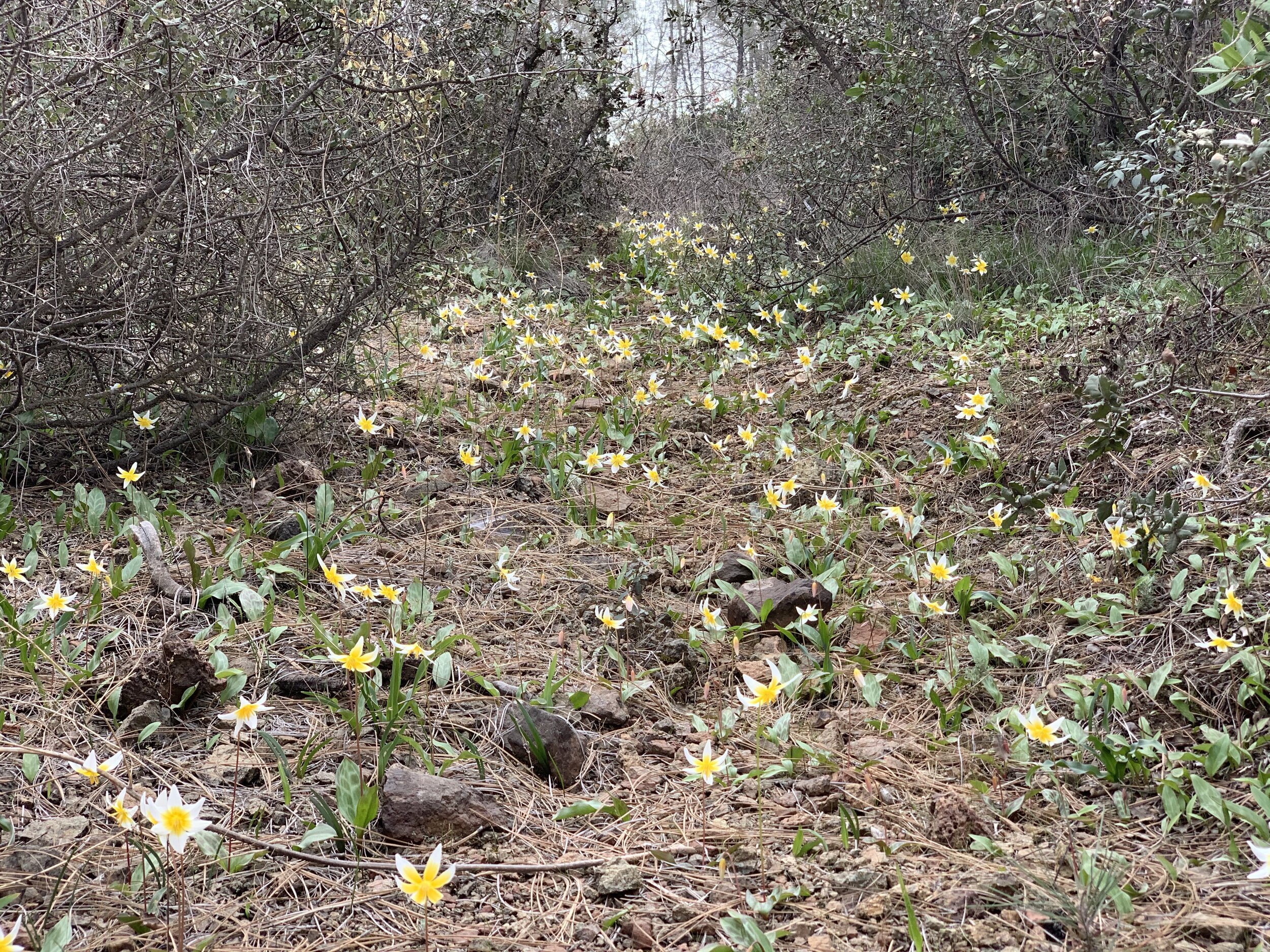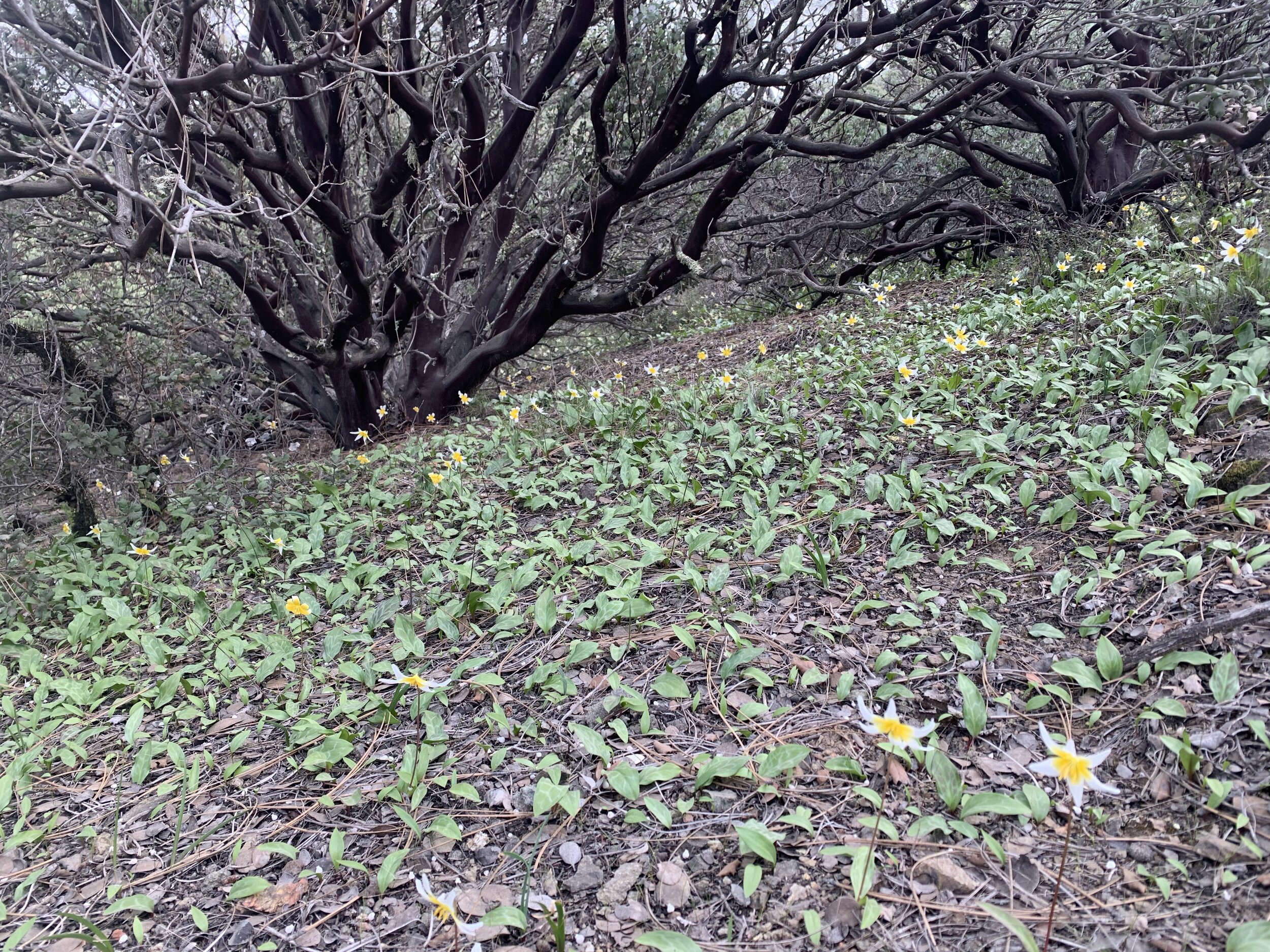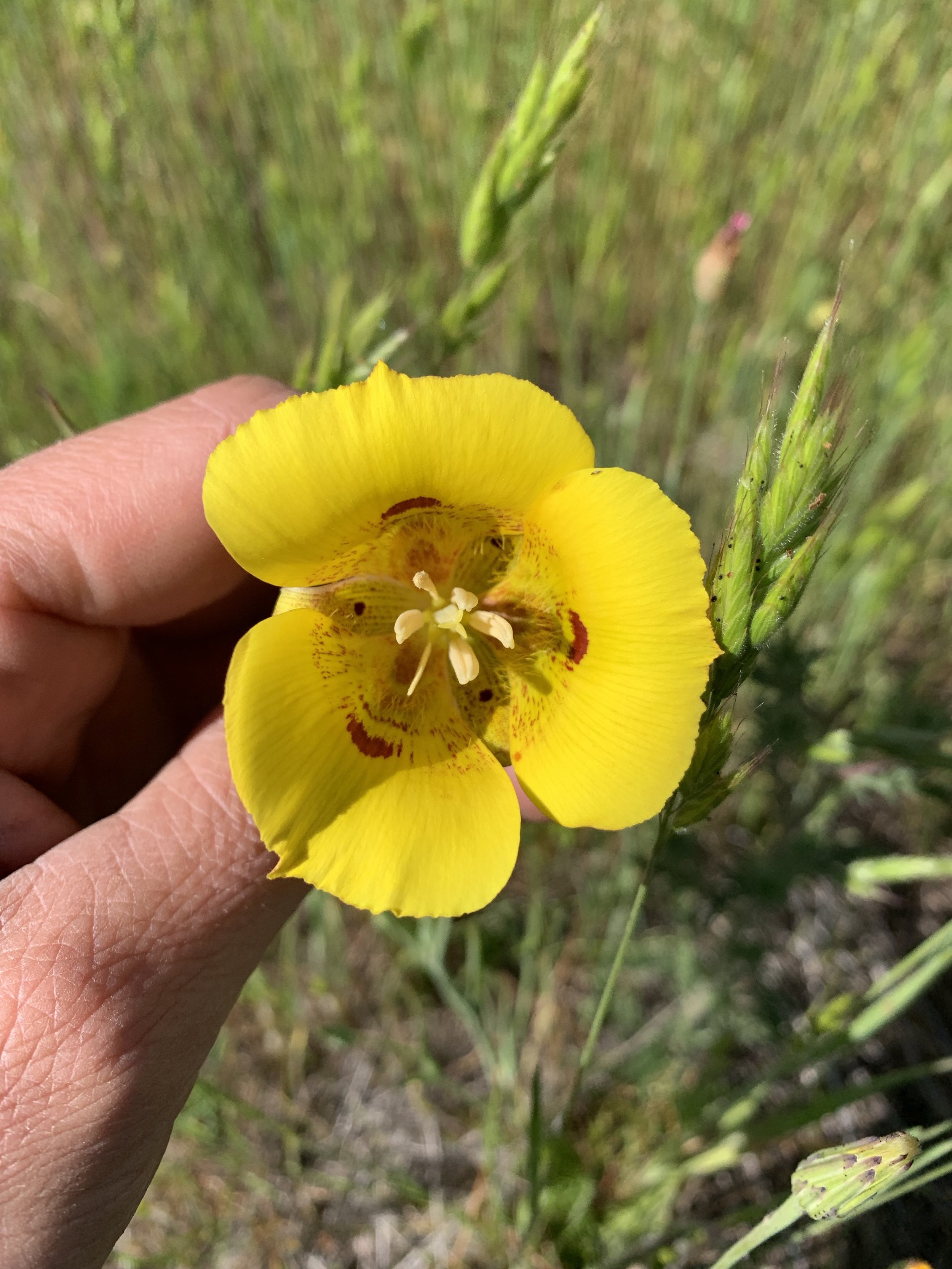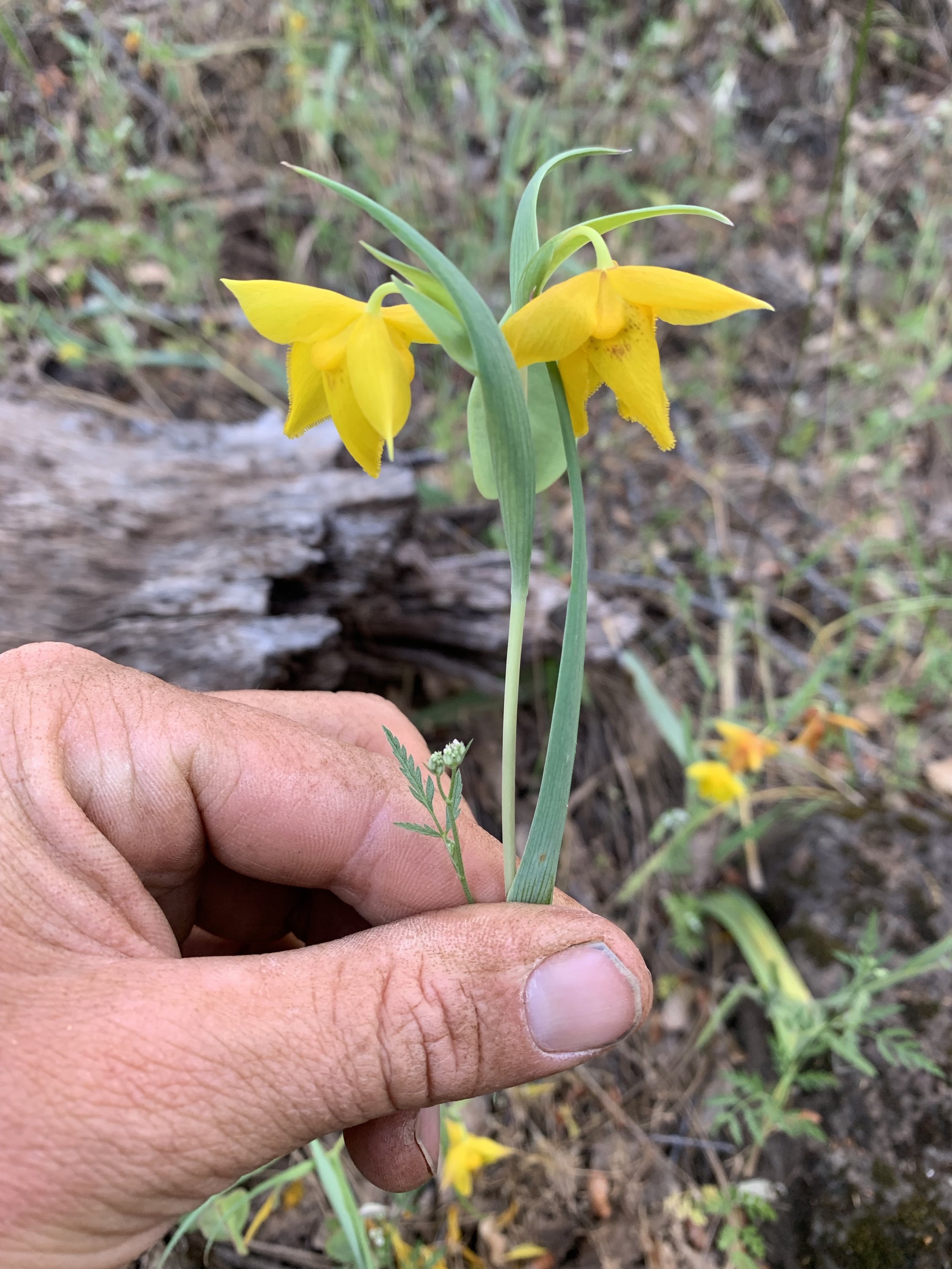Red bud blooming in end of February / early March of this year. Seeing the shock of pink from a distance I hiked up to check this one out. A truly spectacular spring blooming native shrub. The blooming plant is covered in numerous kinds of bees and insects.
Malus toringoides - Cut-leaf Crabapple
Erythronium oregonum - California Fawn Lily
Erythronium californium is a herbaceous perennial bulb native to Northern California. I took these photos in Lake County where the highly scented flowers appear in full bloom at the end of February through March. numbering in the many thousands.
The bulbs, along with many other regional species, were an important food source for indigenous peoples. The bulb populations we see today are remnants of previously managed and far more extensive traditional food and land management systems.
The area depicted in these photos consists of semi-dense chaparral consisting primarily of Manzanita, Heteromeles, and Quercus (duration) along with Umbellaria californica, CThe Erythronium appears in profusion, as shown below, in the understory. The bulb seems to co-exist along side a healthy gopher population, which, reportedly, can aid in the dissemination of bulblets .
Other important genera of edible neophytes widely consumed in pre-contact California include Allium, Brodiaea, Camassia, Chlorogalum, Calochortus, Dichelostemma, Lilium, Lomatium, Perideridia, Sanicula, and Triteleia.
Aesculus California (Ca Buckeye) late winter bud
California Buckeye are one of the first deciduous trees to leaf out in late winter / early spring. This is a photo of a swollen bud, close to flushing out.
Calochortus luteus
A plant from Chile kills and eats sheep...
Puya chilensis, a temperate climate evergreen perennial and close relative to the comparatively tame pineapple, catches, kills and feeds off of relatively large mammals, including sheep.
P. chilensis doesn’t consume and digest plants by way of conventional carnivorous plant methods, but nonetheless, it will snag and trap a sheep in its masses of thorns, holding the animal until it dies of starvation, and then it will proceed to feed off nutrients supplied by the decomposing carcass.
The young leaf shoots of P. chilensis can be eaten by people. Baskets and such are made from strong fibers obtained from the leaves and stems of the plant.
Here is a short recent article on Puya chilensis, apparently a 10ft specimen has just bloomed for the first time at RHS Garden Wisely, in England. Cara Smith, a Horticulturist at Wisley had this to say about the rare occurrence: “I’m really pleased that we’ve finally coaxed our Puya chilensis into flower. We keep it well fed with liquid fertilizer as feeding it on its natural diet might prove a bit problematic. It’s growing in the arid section of our glasshouse with its deadly spines well out of reach of both children and sheep alike.”
So, needless to say, Puya chilensis is a great contender for privacy screening / security planting along boarders shared with pesky neighbors.
Here are some photo I have posted previously of a very close relative to Puya chilensis, Puya berteroniana, spectacular in its own regard for its massive aquamarine/blue and orange flower spikes.
Calochortus amabilis - Golden fairy lantern
Calochortus amabilis flowers.
Calopchortus amabilis, another California native flowering bulb. This is a stout branching plant with bright yellow flowers with a triangular outline.
The plant prefers higher levels of shade, and soil humus rich in organic matter, however it grows in the wild in a wide variety of conditions, including full sun, rocky hillsides, chaparral and Serpentine soils. .
In the wild the plant can be found along the North Coast Ranges from Solano and Marin Counties to Humboldt an Colusa County.
As with the bulbs of many Calochortus species, C. amabilis bulbs were traditionally eaten by Indigenous peoples in the region. Bulbs were baked or boiled and eaten in a similar way as sweet potatoes. Large swaths of land were carefully sustainably managed over generations to provide supply of these delicious and nutritious bulbs.
Young seed pods on Calochortus amabilis
Calochortus amabilis flower close-up.
Thermopsis macrophylla - False Lupine
A west coast native annual nitrogen fixing plant in the Fabaceae family. Reminds me of Crotolaria in its growth habit and overall appearance. It looks like it has potential as a cultivated, drought tolerant biomass or cover corp species.
Thermopsis macrophylla leaf and flower.
Thermopsis macrophylla flower spike.
Edible Condiment Leaves of Southeast Asia
The following is a list of species whose leaves are used as condiments in Southeast Asia. The list is not, by any means, complete, but includes some of the lesser known, more obscure species.
Acacia farnesiana, Cassie flower, Leguminaceae
Achronychia laurifolia, Ketiak, Rutaceae
Aegle marmelos, Bael fruit, Rutaceae
Allium odorum, Chinese chives, Liliaceae
Ancistrocladus extensus, Ox-tongue, Dipterocarpaceae
Antidesma ghaesembilla, Sekinchak, Euphorbiaceae
Begonia tuberosa, Tuberous begonia, Begoniaceae
Claoxylon polot, Rock blumea, Euphorbiaceae
Coleus tuberosus, African potato, Labiatae
Crypteronia paniculata, Sempoh, Lythraceae
Curcuma domestica, Turmeric, Zingiberaceae
Cymbopogon citratus, Lemon Grass, Graminae
Cyrtandra decurrens, Graminae
C. pendula, Rock sorrel, Graminae
Dendrobium salaccense, Cooking orchid, Orchidaceae
Derris heptaphylla, Seven finger, Leguminaceae
Elethariopsis sumatrana, Frangrant gingerwort, Zingiberaceae
Eugenia polyantha, White kelat, Myrtaceae
Evodia roxburghiana, Sour-relish wood, Rutaceae
Gymura procumbens, Akar, Compositae
Homalomena graffithii, Itch grass, Araceae
Hornstedtia, Tepus, Zingiberaceae
Horsfieldia sylvestris, Pendarahan, Myristicaceae
Kaempferia galanga, Chekur (Galangal), Zingiberaceae
Kaempferia rotunda, Kenchur, Zingiberaceae
Leucas lavandulifoia, Ketumbak, Labiatae
L. zeylanica, Ketumbak, Labaiatae
Limnophila aromatica, Swamp leaf, Scrophulariaceae
L. villosa
L. conferta
L. pulcherrima
L. rugosa
Lycium chinese, Kichi, Matrimony vine, Solanaceae
Lycopersicum esculentum, Tomato, Solanaceae
Medinilla crispata, Medinilla, Melastomataceae
M. hasseltii
M. radicans
Mentha longifolia, Longleaf mint, Labiatae
Murraya koenigii, Curry-leaf tree, Rutaceae
Nauclea esculenta, Pincushion, Rubiaceae
Ocimum canum, Hoary basil, Labiatae
Oenanthe javanica, Shelum, Umbelliferae
Ottelia alismoides, Pojnd lettuce, Hydrocharitaceae
Oxalis corniculata, Sorrel, Oxalidaceae
Pilea melastomoides, Sweet nettle, Urticaceae
Piper lolot, Pepper leaf, Piperaceae
P. caducibracteum
P. umbellatum
Pistacia lentiscus, Pistachio resin tree, Anacardiaceae
Pluchea indica, Indian sage, Comppositae
Polygonum hydropiper, Water polygonum, Polygonaceae
Staurogyne elongata, Cross flower, Acanthaceae
Trachyspermum involucratum, Wild celery, Umbelliferae
